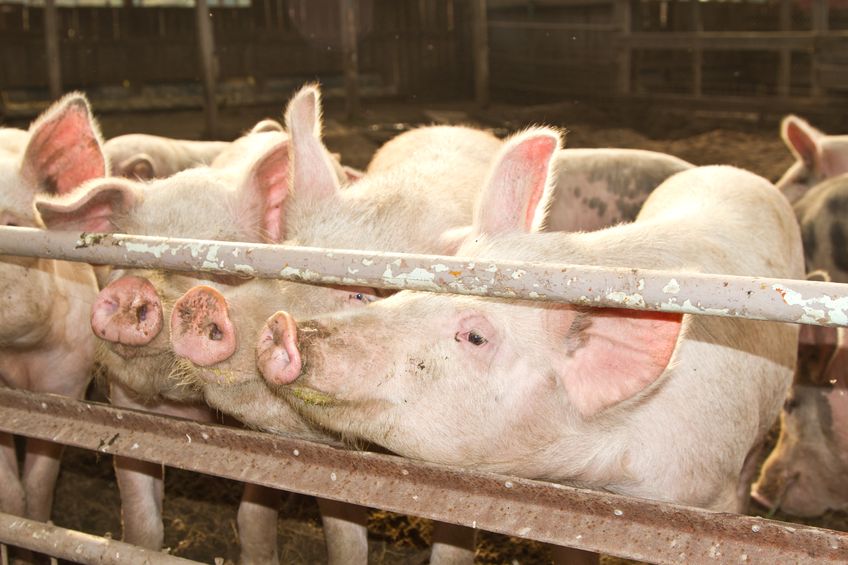
Sales of antibiotics for use in animals in the UK are at a four-year low, putting the UK on track to meet ambitious targets to tackle antibiotic resistance, according to a government report.
The government has published the latest UK-VARSS report revealing antibiotic sales data for 2015, showing the livestock sector is well on course to reach its overall target set for 2018.
The headline figure is an overall 9% reduction, to 404 tonnes, in sales of antibiotics sold for use in animals, including companion animals, compared with 2014. This represents a four-year low.
The figures show the pig sector played a major part in bringing about that overall reduction. Sales of products licensed for both pigs and poultry were down 23 tonnes to 212 tonnes, a 10% drop.

Sales of products licensed for pigs only were down an even more impressive 24%, a 16 tonne reduction to 50 tonnes, the biggest fall across all the sectors. Overall sales for antibiotic use in food-producing animals dropped 10% from 62 milligrams per kilogram (mg/kg) to 56mg/kg.
This continues a ten-year downward trend and puts the UK on track to reach its 50mg/kg target by 2018. Sector specific targets are due to be agreed next year.
The VARSS report also showed a drop in sales of the highest priority antibiotics that are critically important for humans. Sales of these made up just over 1% of all antibiotics sold for use in animals in 2015.

'Pig sector is pulling its weight'
The National Pig Association (NPA) has welcomed the 'encouraging' new data confirming a significant reduction in sales of antibiotics for use on pig farms.
NPA chief executive Dr Zoe Davies said: “We are encouraged by these figures, which show the pig sector is pulling its weight and is taking the challenge of reducing and refining antibiotic usage seriously.
“We fully expect to see further reductions in 2016 and are committed to meeting the challenge of new targets that come our way. We will continue to press for these to be workable and proportionate. Meanwhile, we will continue to push forward the key principles of our Antibiotic Stewardship Programme to drive further change.”
The report also highlighted the work the pig industry is doing to collect on-farm usage data via the electronic eMB-Pigs database.
NPA senior policy advisor Dr Georgina Crayford reiterated the need for any farmers who have not yet done so to upload their data.
“Sales data can only tell us so much. Entering data onto eMB-Pigs is necessary to give us a more detailed understanding of the volume of antibiotics used on farm and how they are used. This, in turn, will help us agree reasonable reduction targets next year.”
'ESBL enzymes' - resistant stuff
The VARSS report also showed the results of research on resistance in E. coli isolated from pigs in 2015. But the NPA said it is slightly concerned about the findings of extended spectrum beta-lactamase (ESBL)-producing E.coli.
Bacteria that produce enzymes called ESBLs are resistant to many penicillin and cephalosporin antibiotics and often to other types of antibiotic.
However, Dr Crayford added: “We are comforted by the fact that ESBL genes found in E.coli from animals have in the past been different to the genes found in ESBL E.coli in human clinical cases, highlighting that the transfer of resistance from animals to humans is not a major concern. We are equally encouraged to see little to no resistance to 3rd and 4th generation cephalosporins and fluoroquinolones, critically important classes of antibiotics for human health, in Salmonella isolated from pigs.”
Dr Crayford said the VARSS report highlighted progress being made in reducing antibiotic use on pig farms but also contained pointers for the future.
“When it comes to setting further targets for the pig sector it is important to note that, while we’re committed to using antibiotics responsibly, reductions in antibiotic use will not necessarily result in a reduction in bacterial resistance. The key is to ensure that further development of antimicrobial resistance (AMR) does not happen. We must also ensure that we do not compromise the health and welfare of our livestock,” Dr Crayford concluded.
Antibiotic resistance is a growing threat to human health - experts believe if we do not take action it could be responsible for ten million deaths per year and cost the global economy $100 trillion by 2050. In September, the UK government announced plans to tackle it, including a commitment to significantly reduce antibiotic use in animals.
